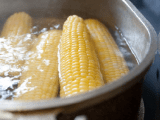 Halloween is almost here! When deciding what treats to buy to hand out to neighborhood goblins, keep in mind those who have food allergies. Always read the ingredient statements on treat wrappers and packaging to identify food allergens and to identify other suspicious problems.
Halloween is almost here! When deciding what treats to buy to hand out to neighborhood goblins, keep in mind those who have food allergies. Always read the ingredient statements on treat wrappers and packaging to identify food allergens and to identify other suspicious problems.
Here is a list of non-food ideas from the Food Allergy Research & Education program.
- Glow sticks, bracelets, or necklaces
- Pencils, pens, crayons or markers
- Bubbles
- Halloween erasers or pencil toppers
- Mini Slinkies
- Whistles, kazoos, or noisemakers
- Bouncy balls
- Finger puppets or novelty toys
- Coins
- Spider rings
- Vampire fangs
- Mini notepads
- Playing cards
- Bookmarks
- Stickers
- Stencils
Help trick-or-treaters identify your home as food allergy friendly by using a teal-colored bucket or pumpkin.
Learn more about Halloween Food Safety from the Partnership for Food Safety Education.




 National Clean Your Refrigerator Day is November 15th! But this cleaning step is important many times of the year. One example is after a power outage.
National Clean Your Refrigerator Day is November 15th! But this cleaning step is important many times of the year. One example is after a power outage.
